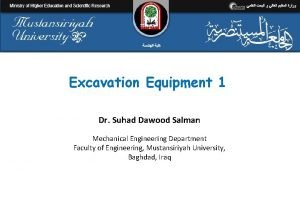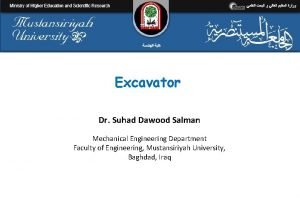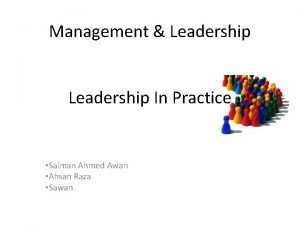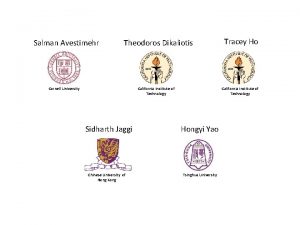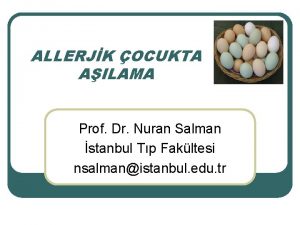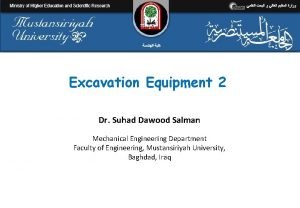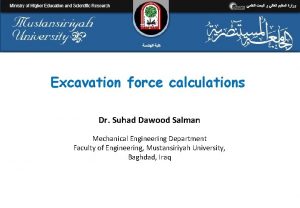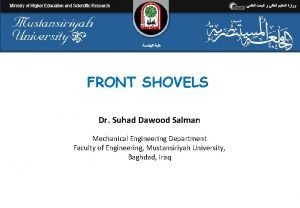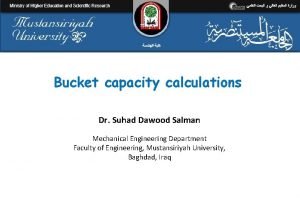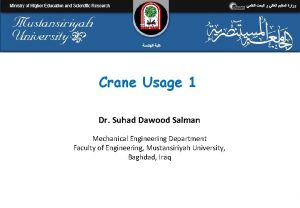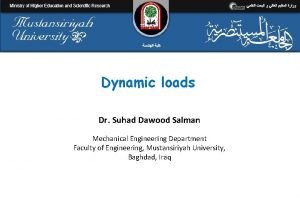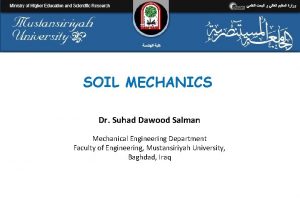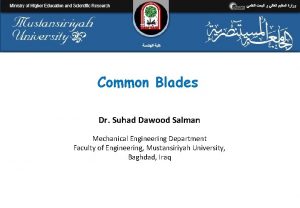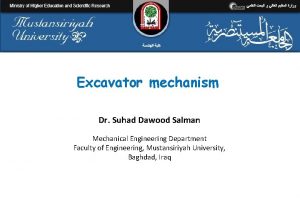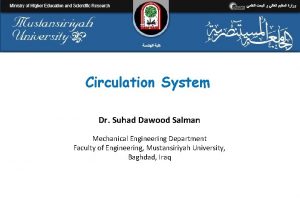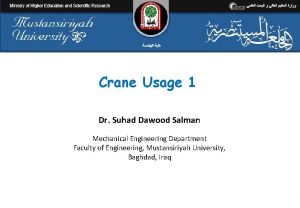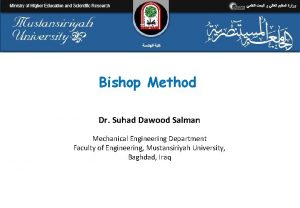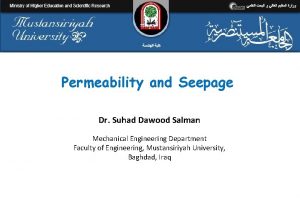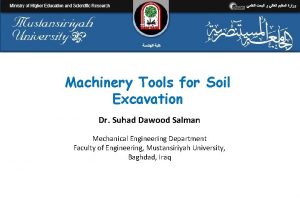Excavation Equipment 1 Dr Suhad Dawood Salman Mechanical
















- Slides: 16

Excavation Equipment 1 Dr. Suhad Dawood Salman Mechanical Engineering Department Faculty of Engineering, Mustansiriyah University, Baghdad, Iraq

v Power shovel v Drag line v Hoes v Clam shell v Trenching Machines v Tractors v Bull dozer v Rippers v Scrapers

Power shovel • To excavate the earth and to load the trucks • capable of excavating all types of earth except hard rock Basics parts of power shovel including the track system, cabin, cables, rack, stick, boom foot-pin, saddle block, boom point sheaves and bucket.

Basic parts

Application: Suitable for heavy positive cutting in all types of dry soil, cutting and for loading. Types of Power Shovel: v Crawler mounted. Low travel speed, on soft grounds. v Wheel mounted. High speed, on hard ground.

Factors Affecting the Output Ø Types of Soil Ø Depth of cutting Ø Angle of swing Ø Job condition Ø Management condition Ø Size of hauling units Ø Skill of the operator Ø Physical condition of the shovel

Dragline Ø Draglines are useful for digging below its track level and handling softer materials. Ø Unlike the shovel, it has a long light crane boom and the bucket is loosely attached to the boom through cables. Ø Because of this construction, a dragline can dig and dump over larger distances than a shovel can do.


Types of Draglines • Crawler mounted Low travel speed, soft ground, large projects • Wheel mounted high travel speed, firm ground & scattered job • Truck mounted high travel speed, firm ground & scattered jobs • Walking draglines

Advantages Ø Can work from the ground surface while shovel has to be taken into the pit. Ø Hauling equipment need not to go in the pit. Ø High range than shovel. Disadvantages Ø Less digging force. Ø As the boom length increases the bucket size must be decreased. Ø Output is less than shovel.

Factors Affecting the Output Ø Types of Soil Ø Depth of cut Ø Angle of swing Ø Job condition Ø Management condition Ø Size of hauling units Ø Operator skill

Back Hoe q Also known as a hoe, back shovel and pull shovel. q It is used to excavate below the natural surface on which it rests. q Generally used to excavate trenches, pits for basements and also for grading works, which requires precise control of depths. q The basic parts are a boom, Jack boom, Boom foot drum, Boom sheave, Stick, Bucket and Bucket sheave


Application: § § Though not efficient as shovel. Most suitable for digging below the machine level. Levelling and loading. Used to trim the surface. Selection of Back Hoe § § Maximum Excavation depth. Maximum Working radius. Maximum dumping height. Hoisting capability.

Advantages v Hoe exert greater tooth pressure than shovel due to direct pull. v Due to rigidity superior than draglines. v Superior to trenching machines when the side banks are allowed to have natural slope. Disadvantages v Not efficient as shovels. v Slow in working when dumping in hauling machines. v Liable to fall.

Thank you for listening
